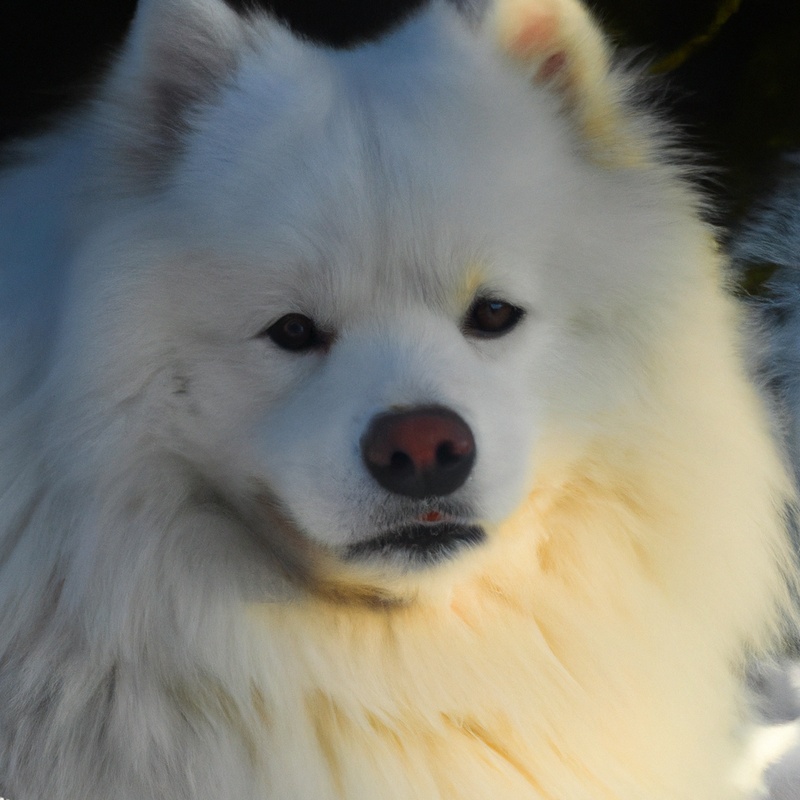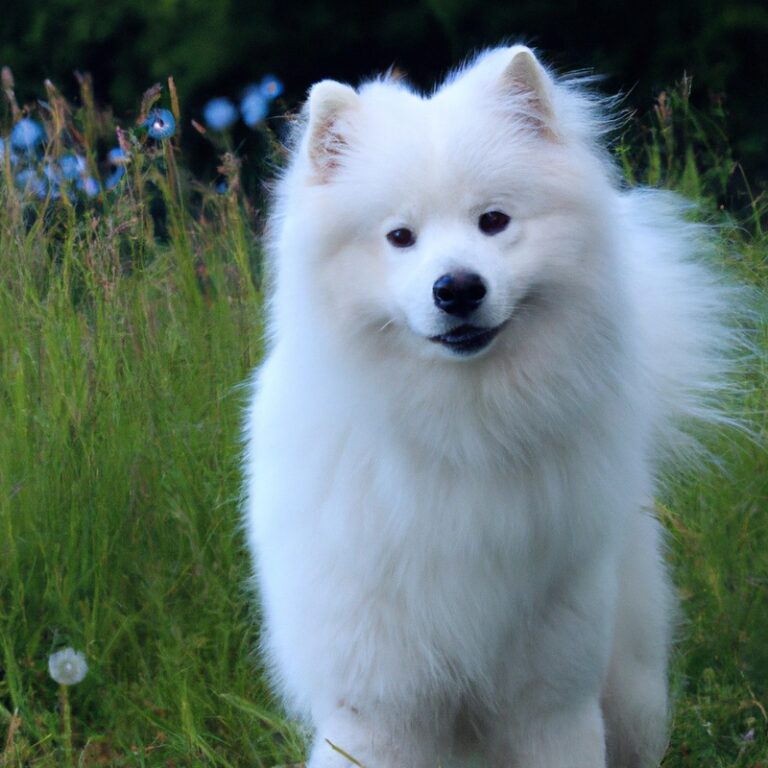How To Introduce a Samoyed To a New Cat?
Key Takeaways:
- Patience and gradual introductions are key when introducing a Samoyed to a new cat.
- Providing separate spaces and resources for the Samoyed and the cat can help ease the transition.
- Supervised interactions and positive reinforcement can help foster a positive relationship between the Samoyed and the new cat.
- Seeking guidance from a professional animal behaviorist may be beneficial in ensuring a smooth introduction process.
Imagine the excitement of bringing a playful, lovable Samoyed into your home, only to realize you already have a furry feline friend.
The thought of introducing the two might be daunting, but fear not! As an expert in pet behavior, I’m here to guide you through the process and ensure a harmonious coexistence.
In this article, we’ll dive into understanding the temperaments of Samoyeds and cats, preparing for the introduction, the step-by-step introduction process, and tips on promoting a peaceful living environment.
So, have no fear, soon you’ll witness an unlikely friendship unfold before your eyes! Let’s get started.
| Samoyed | New Cat | |
| 1. Introduction | Allow them to sniff each other under supervision | Allow the cat to approach the Samoyed in its own time |
| 2. Initial Separation | Keep them in separate rooms, providing positive experiences | Provide a cat-only safe space until they feel comfortable |
| 3. Scent Exchange | Exchange bedding to help them become familiar with each other’s scents | Exchange bedding to help them become familiar with each other’s scents |
| 4. Controlled Meetings | Gradually increase interaction time while always monitoring their behavior | Gradually increase interaction time while always monitoring their behavior |
| 5. Positive Reinforcement | Reward both the Samoyed and the cat for calm and friendly behavior | Reward both the Samoyed and the cat for calm and friendly behavior |
| 6. Time and Patience | Give them time to adjust to each other’s presence and establish their own relationship | Give them time to adjust to each other’s presence and establish their own relationship |
Understanding the Temperament of Samoyeds and Cats
Key Differences in Temperament
Key Differences in Temperament:
- Independence: While cats are known for their independent nature, Samoyeds are more people-oriented and thrive on human companionship.
- Energy levels: Samoyeds are energetic and love to play, requiring regular exercise, while cats are generally more sedentary and enjoy relaxation.
- Socialization: Cats are typically more reserved and may take time to warm up to new animals, including Samoyeds, who are generally friendly and enjoy social interactions.
- Trainability: Cats are not typically trained as thoroughly as dogs, but Samoyeds are highly trainable, making them more receptive to commands and obedience training.
- Communication: Cats use body language and vocalizations like purring and meowing to communicate, while Samoyeds are known for their expressive barking and howling.
- Grooming needs: Samoyeds require regular grooming and maintenance of their thick coats, while cats are known for their self-grooming habits and require less human intervention.
- Prey drive: Cats have a strong instinct for hunting and may view Samoyeds as prey, requiring careful monitoring and gradual introductions to ensure a harmonious coexistence.
These key differences in temperament between Samoyeds and cats should be considered when introducing them to ensure a smooth and successful integration.
Assessing Your Samoyed’s Personality
Assessing your Samoyed’s personality is essential before introducing them to a new cat.
Observe how your Samoyed interacts with other animals, including their energy level and reaction to unfamiliar animals.
Spend time with them to see if they display any signs of aggression or fear.
Additionally, consider their trainability and sociability, as these traits can affect their ability to adapt to a new cat.
Understanding your Samoyed’s personality will help you plan a successful introduction and ensure a harmonious relationship between your pet and the new addition to your family.
Assessing Your Cat’s Personality
Assessing your cat’s personality is an important step in introducing a new Samoyed to your home.
Start by observing your cat’s behavior and temperament.
Does your cat enjoy socializing with other animals or prefer to be alone?
Look for signs of aggression or fearfulness.
Consider your cat’s energy level and activity preferences.
This will help you understand how your cat may react to the presence of a new dog.
Taking the time to assess your cat’s personality will enable you to create a smooth and harmonious introduction process.

Preparing for the Introduction
Creating Separate Spaces
Creating separate spaces for your Samoyed and new cat is essential to ensure their safety and a smooth introduction process. Start by designating a specific room or area for each pet, with separate food, water, and litter box locations.
Use baby gates or pet barriers to create physical boundaries.
Provide comfortable beds or spaces for each pet to retreat to. Gradually introduce them to each other’s scents using blankets or toys.
This will help them become familiar with each other before any face-to-face interactions occur.
Familiarizing the Pets with Each Other’s Scent
To familiarize your Samoyed and new cat with each other’s scent, you can start by swapping their bedding or placing a towel or cloth with each pet’s scent in the other’s living area. This allows them to become accustomed to each other’s smell in a non-threatening way.
Additionally, you can rub a small cloth on one pet and then let the other pet sniff it, gradually increasing the exposure over time.
Remember to supervise their interactions and take things at a pace that ensures both pets feel comfortable.
Using Visual Barriers
Using visual barriers can be a helpful technique when introducing a Samoyed to a new cat.
By using baby gates or a pet screen door, you can create a physical barrier that allows the animals to see and smell each other without direct contact.
This can help them become familiar with each other’s presence and reduce potential stress or aggression.
Remember to monitor their interactions and gradually increase their exposure over time to ensure a successful introduction.
Setting up a Meeting Space
To set up a meeting space between your Samoyed and a new cat, you want to create a neutral and safe environment for both animals. Start by choosing a quiet and spacious area where they can interact without feeling overwhelmed.
Place baby gates or a screen door to separate the space initially, allowing them to see and smell each other without direct contact.
Provide each animal with their own food, water, and litter box to avoid competition. Gradually introduce supervised face-to-face interactions, always observing their body language for signs of stress or aggression.

The Introduction Process
Gradual Introductions
When introducing a Samoyed to a new cat, gradual introductions are key.
Start by keeping them separated in different rooms, allowing them to become familiar with each other’s scents through closed doors.
Swap bedding, toys, and blankets between them to further acclimate them to each other’s presence.
Gradually introduce them face-to-face in controlled and supervised interactions, and reward positive behavior with treats and praise.
Take it slow and give them time to adjust to each other’s presence to ensure a harmonious relationship between your Samoyed and cat.
Supervising the Initial Interactions
When introducing a Samoyed to a new cat, it’s important to supervise their initial interactions. Keep a close eye on both animals to ensure their safety and well-being.
Watch for any signs of aggression or fear and be prepared to intervene if necessary.
Allow them to get used to each other’s presence gradually, starting with short supervised sessions and gradually increasing the duration. Use positive reinforcement and rewards to create positive associations between them.
Remember to take it slow and be patient during this process.
Reading Body Language
Reading body language is crucial when introducing a Samoyed to a new cat.
Pay attention to their postures, facial expressions, and tail movements.
A relaxed and loose body signals friendliness, while a tense or stiff body indicates fear or aggression.
Keep an eye on their ears as well; forward ears show curiosity, while flattened ears suggest anxiety.
Slow and calm movements are better than sudden ones, as they can startle or intimidate the animals.
Remember, each interaction is unique, so be patient and observant to ensure a successful introduction.

Offering Positive Reinforcement
Offering positive reinforcement is key when introducing a Samoyed to a new cat. Remember, positive reinforcement involves rewarding desirable behavior.
Here’s how you can do it:
- Use treats: Reward both the Samoyed and the cat with treats when they interact calmly and positively.
- Praise and petting: Give them verbal praise and gentle petting when they exhibit friendly behavior towards each other.
- Playtime together: Engage them in interactive play sessions, using toys they both enjoy, to promote positive associations.
Remember, patience and consistency are essential. With time and positive reinforcement, your Samoyed and new cat can become great companions.
Promoting a Harmonious Coexistence
Ensuring Sufficient Resources and Attention
To ensure a harmonious relationship between your Samoyed and new cat, it is vital to provide sufficient resources and attention.
Make sure each pet has their own food and water bowls, litter box, toys, and comfortable resting spaces.
Create a schedule that allows for separate play and bonding time with both pets.
Provide plenty of mental and physical stimulation through interactive play and regular exercise.
By giving each animal their own space and attention, you can foster a positive and balanced environment for everyone involved.
Managing Potential Conflicts
Managing potential conflicts between a Samoyed and a new cat requires a gradual and supervised introduction. It’s important to give each pet their own designated spaces and gradually introduce their scents to one another.
Start with short, supervised interactions and reward positive behavior.
Gradually increase the time they spend together and provide plenty of positive reinforcement for good behavior. Keep in mind that each pet may need their own safe space to retreat to if needed.
Gradually Increasing Interaction Time
To gradually increase the interaction time between your Samoyed and new cat, start by allowing them to sniff and observe each other from a safe distance. Then, you can slowly introduce short supervised interactions while monitoring their body language.
Encourage positive experiences through treats and praise.
Increase the amount of time they spend together gradually, but always prioritize their safety and comfort. Be patient and observe their progress at their own pace.
Seeking Professional Help if Necessary
If you find that introducing your Samoyed to a new cat is challenging and you’re not sure how to proceed, seeking professional help is a viable option. A professional animal behaviorist or trainer can provide valuable guidance and advice tailored to your specific situation.
They have experience in dealing with and mediating inter-species relationships, and can help you create a plan to ensure a smooth introduction and a harmonious coexistence between your Samoyed and the new cat.
Don’t hesitate to reach out for professional assistance if you feel it’s necessary.
Frequently Asked Questions
Can all Samoyeds get along with cats?
Not all Samoyeds can get along with cats. Each individual dog has its own personality and temperament, so their compatibility with cats can vary.
It’s important to introduce them gradually and supervise their interactions to ensure their safety.
Some Samoyeds may have a high prey drive, which can make it challenging for them to coexist peacefully with cats. Proper training and socialization from a young age can increase the chances of successful integration.
Consulting with a professional dog trainer or behaviorist can provide guidance in this process.
How long does it take for a Samoyed and a cat to become friends?
Becoming friends with a Samoyed and a cat can take some time, as every pet has a unique personality.
On average, it may take a few weeks to several months for them to develop a bond.
Patience and gradual introductions are key.
Start by keeping them separated and slowly allow supervised interactions.
Ensure they have their own spaces and resources.
Keep in mind that positive experiences and consistent reinforcement will help foster a harmonious relationship.
Should I separate my Samoyed and cat when I’m not home?
If you’re wondering whether you should separate your Samoyed and cat when you’re not at home, the answer is, it depends. Every dog and cat is different.
Some may get along fine and can be left together, while others might not have a great relationship and should be separated for their safety.
Consider the personalities and past experiences of your pets before making a decision. If you’re unsure, it’s always a good idea to consult with a professional trainer or veterinarian for guidance.
What if my Samoyed and cat don’t get along despite my efforts?
If your Samoyed and cat don’t get along despite your efforts, it’s important not to panic.
Here are a few steps you can take:
- Slowly introduce them: Start by allowing them to sniff each other’s scents without direct contact. Gradually increase supervised interactions, allowing them to see each other from a safe distance.
- Provide separate spaces: Ensure that both your Samoyed and cat have their own retreat areas where they can relax and feel safe.
- Positive reinforcement: Reward both pets with treats and praise when they exhibit positive behaviors around each other.
- Gradual physical contact: Once they seem comfortable with each other’s presence, allow controlled and supervised physical contact between them.
- Seek professional help if needed: If their relationship doesn’t improve over time, consider consulting a professional trainer or animal behaviorist for guidance.
Remember, every pet is unique, and it may take time for them to adjust to each other’s presence.
Stay patient, consistent, and always prioritize the safety and well-being of your pets.
Can Samoyeds be trained to live peacefully with cats?
Yes, Samoyeds can be trained to live peacefully with cats. The key is to introduce them slowly and carefully, allowing them to get used to each other’s presence and scent.
It’s important to supervise their initial interactions and provide positive reinforcement for calm behavior.
Gradually increase their time together while also providing separate spaces for each pet to retreat to. Patience and consistency are key in helping them establish a harmonious relationship.
Final Verdict
Introducing a Samoyed to a new cat requires careful planning, patience, and understanding of their individual temperaments. By assessing the personalities of both pets, creating separate spaces, and gradually introducing them with positive reinforcement, you can promote a harmonious coexistence.
Remember to closely monitor their interactions, read their body language, and seek professional help if needed.
Although it may take time for them to become friends, with proper management and training, Samoyeds can live peacefully with cats. As an expert in the field, I am confident that following these steps will increase the chances of a successful introduction and ensure a happy and harmonious household for everyone involved.







